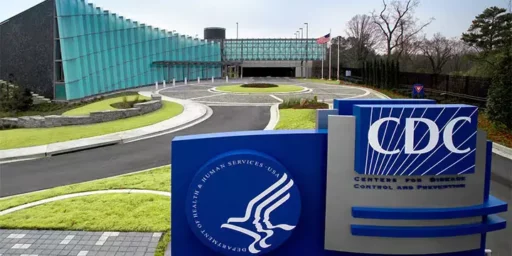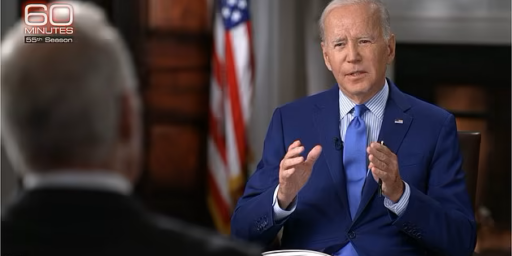The Pandemic Continues
Reminders from a perusal of the news.

No doubt OTB readers are well aware of the fact that the threat of the coronavirus remains ever-present, I was just struck by the number of stories about the pandemic this morning. I also was struck by this NYT headline: As the Coronavirus Surges, a New Culprit Emerges: Pandemic Fatigue.
First, just a status check, which is not encouraging:
summer did not extinguish the virus. And with fall has come another dangerous, uncontrolled surge of infections that in parts of the world is the worst of the pandemic so far.
The United States surpassed eight million known cases this past week, and reported more than 70,000 new infections on Friday, the most in a single day since July. Eighteen states added more new coronavirus infections during the seven-day stretch ending on Friday than in any other week of the pandemic.
In Europe, cases are rising and hospitalizations are up. Britain is imposing new restrictions, and France has placed cities on “maximum alert,” ordering many to close all bars, gyms and sports centers. Germany and Italy set records for the most new daily cases. And leaders in the Czech Republic described their health care system as “in danger of collapsing,” as hospitals are overwhelmed and more deaths are occurring than at any time in the pandemic.
Second, the fatigue:
If the spring was characterized by horror, the fall has become an odd mix of resignation and heedlessness. People who once would not leave their homes are now considering dining indoors for the first time — some losing patience after so many months without, others slipping in a fancy meal before the looming winter months when the virus is expected to spread more readily.
[…]
“In the spring, it was fear and a sense of, ‘We are all in it together,'” said Vaile Wright, a psychologist at the American Psychological Association who studies stress in the United States.
“Things are different now,” she said. “Fear has really been replaced with fatigue.”
The fatigue is real, to be sure, and understandable. But if that fatigue leads to complacency in the context of growing cases, it is going to get ugly in the next couple of months. The glimmer of good news is that we know more about the virus and how to treat it now than we did back in March.
The whole piece is worth reading, but it underscores an ongoing comparison between the US and Europe in terms of response as well as the fact that fatigue leads to back public health decisions (and we in the US have not been great with those decisions in the first place).
A story that intersects well here is a column from Yahoo Sports: Florida’s Dan Mullen learns the hard way about COVID-19.
Last Saturday afternoon, Florida coach Dan Mullen was pushing for his school to allow some 90,000 fans to jam Ben Hill Griffin Stadium in Gainesville for this week’s matchup with LSU.
By Wednesday, the game was postponed due to an outbreak of COVID-19 among Florida players and coaches.
By Saturday, Mullen announced he had COVID-19 himself.
Just like that.
Which, in turn, dovetails with this: Florida Reports Highest Coronavirus Numbers In Past Two Months.
Florida reported its highest coronavirus numbers in two months with another uptick in new infections Saturday, surging to more than 4,000 cases.
The state also reported nearly 90 more deaths, which pushed its official death toll to nearly 16,000 Floridians since March. Since the outbreak began, Florida has recorded more than 752,00 coronavirus cases.
And let me tack on, via WaPo: How the Sturgis Motorcycle Rally may have spread coronavirus across the Upper Midwest
Within weeks of the gathering, the Dakotas, along with Wyoming, Minnesota and Montana, were leading the nation in new coronavirus infections per capita. The surge was especially pronounced in North and South Dakota, where cases and hospitalization rates continued their juggernaut rise into October. Experts say they will never be able to determine how many of those cases originated at the 10-day rally, given the failure of state and local health officials to identify and monitor attendees returning home, or to trace chains of transmission after people got sick. Some, however, believe the nearly 500,000-person gathering played a role in the outbreak now consuming the Upper Midwest.
More than 330 coronavirus cases and one death were directly linked to the rally as of mid-September, according to a Washington Post survey of health departments in 23 states that provided information. But experts say that tally represents just the tip of the iceberg, since contact tracing often doesn’t capture the source of an infection, and asymptomatic spread goes unnoticed.
And, there are these ongoing events: Trump tells thousands in Janesville that Wisconsin is key to winning ‘the whole ball game’
President Donald Trump packed thousands together for a re-election rally Saturday, arguing that his own recovery proved the response to COVID-19 was working and claiming the pandemic was “rounding the corner” in a state setting records daily for new cases.
The president didn’t mention that Wisconsin is grappling with one of the worst coronavirus outbreaks in the country, with nearly 4,000 new cases reported just on Friday and a surge of infections that has pushed state officials to open a field hospital to give relief to hospitals in the northeastern part of the state.
[…]
Thousands of followers packed together on the tarmac at the Southern Wisconsin Regional Airport to hear the speech. Plenty wore masks, especially those sitting near the president and within view of cameras filming the speech. But many others did not appear worried about the rally spreading the virus and didn’t wear masks.
The event was held a day after Wisconsin posted a record for the most coronavirus cases in a day — 3,861. The number of people hospitalized because of COVID-19 has tripled in Wisconsin in the last month and nearly 1,600 people in the state have died from it.
Despite the worsening situation in Wisconsin, attendees of Trump’s rally were neither required to wear masks nor stay distant from each other.
There is perhaps nothing more emblematic of the Trump administration than the assertion that since Trump himself got the disease and recovered that it proves he is handling the pandemic well. First, it is utterly, totally self-centered. By that logic, there is no employment problem in the United States, since Trump himself has a job. Second, it underscores yet again an utter and total ignorance of what his job actually is. There is no governing going on here. And, third, it reveals the utter disconnectedness between himself and common Americans, who aren’t getting helicopter rides to the hospital to get personalized care in a suite at no cost.
It is just a reminder of what a bad president he is and what a morally bankrupt human he is.
And all of this is a reminder that while Trump is no responsible for the pandemic, his handling of it has been atrocious and has worsened its effects by several magnitudes.






Amen to all three points in your nut graph, Steven. I’d only add that Trump’s personalized care included treatments unavailable to almost everyone outside of a clinical trial applied with an urgency given no other patient.
The pandemic fatigue is going to bring really ugly results. My family, including 2 college age sons and an at-risk mother-in-law, are fully aware of the risks and thoroughly committed to the safe behaviors, yet we are all bristling at the isolation and the loss of public activities (like concerts, theater, the movies, and dining out) that we enjoy so much. It easy to imagine how the separation and sense of loss would be an even greater challenge to those who are not as aware or as committed.
We’ve got to start hitting back hard on people who don’t take COVID or the “good neighbor” rules seriously. You decide to not wear a mask and cluster with other non-mask wearing people? Fine. Just don’t expect to get at the front of the line when you show up at the emergency room. You go at the back of the line, and you only get treated after you’ve ponied up the cash for your treatment up front and if there’s a doctor who isn’t suffering from stress, overwork, and lack of sleep. You assumed the risk–now deal with the consequences.
Stupidity should hurt.
Not to make excuses for Trump, but this disaster is confined to the U.S.:
http://www.cnn.com/2020/10/16/europe/europe-coronavirus-records/intl/index/html
@CSK:
I meant to say that “this disaster isn’t confined to the U.S.” And I screwed up the web address. It should be:
http://www.cnn.com/2020/10/16/europe/europe-coronavirus-records-intl/index.html
I really wish the edit function worked.
@CSK: FWIW, I certainly did not mean to suggest this was only a US problem. The “fatigue” piece noted a number of areas of concern in Europe.
Yep, people are fatigued at wearing masks and staying out of bars. I mean, we’ve had to endure that crushing, brutal regimen for 7 months now!
Roughly the same amount of time it took pioneers to ride in a wagon from Missouri to Oregon with too little food, too little water, no medicine to speak of, frequent backbreaking labor, floods, snowstorms and the constant threat of Indian attacks.
What is proof that we are soft, Alex?
@Steven L. Taylor:
Oh, I know. But it’s depressing to read that some of the countries that did a model job initially are now seeing big surges in in the incidence of Covid.
What I fear is that some people, aware that even model countries have been hit hard a second time, will say “What’s the use of doing anything?”
And it’s incredible to realize that if he had handled it well, it would have been of great benefit to him politically. We can see that clearly by looking at the fate of political leaders around the world who did handle it well. That’s the true, horrible irony of the situation: he’s incapable of looking at the situation except through a political lens (or, rather, through the lens of what will help him), which is what led him to his central strategy of pretending the problem doesn’t exist. It’s self-destructive, but it’s his only way of processing the situation since he has literally no idea how to think long-term about his own interests, let alone anyone else’s.
@Michael Reynolds:
Just to be pedantic, almost all of the pioneers walked from Missouri to Oregon. Oxen were a critical component and there were no replacements, so were pampered. Certainly to the extent that everyone except the driver walked rather than rode most of the time.
Indeed. I really cannot even begin to grasp this sense of great imposition and fatigue that so many people seem to have. Honestly, what the frak is so hard about not socializing in groups for a few months or even a year and masking up when you have to go out for necessary activities like work, groceries, etc.? Sure, the day-to-day absence of others kinda sucks, and I definitely miss seeing my family and close friends in person, but this isn’t some unbearable burden we’re talking about here. Future generations aren’t going to be writing hagiographic homages to the courage and stoicism it must have taken us all to get through the terrible ordeal of only being able to socialize via social media, phones, and video chat apps for a few months.
@R. Dave:
Imagine it’s the 15th century in Europe and they’ve just discovered that all it takes to survive the Black Plague is a scrap of cloth over your mouth and avoidance of crowded places. I think they’d have managed to do that.
The Zombie apocalypse scenarios seem more real by the day. Except the zombies are already here. Many people, like zombies, have little capacity for delayed gratification. If we need 80% compliance for more than a few months, we’re going to have trouble. And without consistent guidance and the necessary tracking and containment systems in place, we’re truly in a bad place.
Worse than simply doing a botched job, the Trump administration actually poisoned the well, making it nearly impossible for a future competent response.
@Michael Reynolds:
thank heavens. Something like 10% of the people who started the Oregon Trail, didn’t finish the Oregon trail. Dysentery, cholera, being kicked by a steer, scalped by a Shoshone, drowning while fording the river… 😀
Jesus, these fickle edit buttons.
The dismissal of hard hard it is to wear masks and keep social distance shows that few in this comment section live 10 persons to a 2 bedroom city apartment working essential service jobs. Not that they are the ones complaining, but they are ones feeling the most fatigue.
@CSK:
This.
The numbers from Europe over the last 2 weeks are appalling — exponential growth again, up to more than 80,000 new cases per day, daily deaths back up to more than 600 per day and trending upward fast enough that they should pass the US in daily deaths sometime this week. Belgium is going back into lockdown; the Czech Republic’s ICUs are getting overwhelmed.
All of that excellent original response has been… well, not quite wasted, since treatment protocols are better now and nothing looks quite like northern Italy did in March. But they’ve taken an enormous step backward.
@Dutchgirl:
You’re quite right. It’s an impossible situation for those in it.
@Dutchgirl:
We heard from one of our nephews on that. Shares a house with 4 others, he and one other have office jobs and are working from home, while the others are in the service industry. He’s wistful from the time of the lock down, as his roomies are responsible and wore masks/distanced outside the house and they could do without masks at home. But now with everyone working in public, its masks pretty much 24×7.
@Michael Reynolds: On the one hand, I totally take your point and agree. On the other, I must confess that I am tired of worrying about protocols and just the daily way in which the pandemic takes up brain space and time (as we manage now and plan for Spring, etc.). There is some legitimate fatigue to be had from all of this.
@Dutchgirl: Horse puckey. Those are not the people crowding into bars, dining out in restaurants, attending packed concerts and sports events, traveling to major rallies and events, etc. The people clamoring to allow all of that stuff are **shocker** the people who have sufficient disposable income to do those things (i.e., not service workers with such low wages that they have to live 5-people to a room).
@Dutchgirl: If all the rest of us were being careful with social distancing, wearing masks, washing our hands etc., then the chance of COVID spreading would have gone down and those essential workers living 10-12 to a two-bedroom place wouldn’t be under so much stress. Plus they might not have to wear protective gear quite so much.
As it is, we’re acting as if they’re cannon fodder to sacrifice so that we can keep grocery shopping, go to hotels and other public buildings, etc. And boy how do we complain about our inability to “go back to normal.”
@Michael Reynolds: Contrasting the moderate unpleasantness of pandemic safety to the Oregon trail makes me think of one thing: it’s so much easier to follow a strict diet than a “eat garbage in moderation” diet.
Either as a species or a culture, we much better good at dealing with significant hardship more than slight hardship.
Ok, two things: you can see “too little food, too little water, no medicine to speak of, frequent backbreaking labor, floods, snowstorms and the constant threat of Indian attacks.” We don’t see Covid.
We aren’t seeing the people on ventilators, and you can’t visit your aunt in the hospital. People go away, and either come back or don’t. The media isn’t showing us what happens, they are just showing us graphs. It’s not quite real for a lot of people until they see it. And then, it’s too late.
So, anyone want to take bets on how we handle global warming? No? We’ll too bad, we’re all taking that bet.
Sure, but fatigue on a “commiserating about how sick of it we all are” level, not on a “this has become such an intolerable burden that we must be lift restrictions despite the huge increase in preventable illness and death that doing so will cause” level. In a society with a reasonable sense of perspective, pandemic fatigue would be a human interest story in the weekend edition of the paper and a topic for fluffy morning shows, not an potential policy driver
This is a really excellent point. I do wonder how much of the divide between people who favor strong protective measures and those who don’t is driven by differences in ability or proclivity to relate abstract information to concrete reality and incorporate the former into one’s perception of the latter.
@R. Dave:
Unless you’re going to say that there is a rural vs. urban divide in that ability… I don’t think it’s the driving factor.
When the virus hit NYC hard, there were a lot of news reports about it. And, for a lot of Americans, NYC is “them” rather than “us”. So it had the same effect as starvation in Africa — you hate to see it, but it’s far away and there isn’t a whole lot you can do about it, and there are people in your own communities having other problems.
By the time Covid is decimating South Dakota, it’s old news. Particularly to the media who are concentrated in NYC and LA and the other big cities. Also, the “us” vs. “them” divide hits. So it doesn’t get the same coverage. And it’s less exciting anyway, since the PPE shortages are less, so you don’t have the “doctors wearing trash bags as they risk their lives against an unknown virus” angle.
And so the people who need to see it hitting rural states, the people who would say “oh, shit, that’s us” don’t get that.
Plus the President is downplaying it, and the right wing media has been playing along. But that’s just Fox and that ilk. NBC isn’t covering it beyond graphs now. The failing NYTimes covered every death when it hit 100,000, but nary a peep at 200,000. .
Very, very few people are motivated by graphs — it just happens that we are all those people.
@R. Dave: your comment misses my point significantly: I was responding specifically to the commenters above who were making light of the hardship of wearing masks and social distancing. It’s easy to think its no big deal when you have your own space, choices in where/how to buy things, reliable private transportation, a safe neighborhood to get outside in, and I saw that was not being acknowledged.
I fuckin LOVE charts.
When you hang out at a place like this, it’s very easy to forget that there’s a big chunk of the population who can’t tell you who we fought in World War II, or what a marginal tax rate is.
@Teve: Indeed. As a group we are way more informed, educated, and interested than average. But even then, there is a limit to human understanding of big numbers. I don’t think the next 100,000 deaths will have the same impact as reaching the first 100,000, because the numbers are getting so big its hard to comprehend. I LOVE charts because it can visually represent those facts.
The equivalent population of the entirety of Baton Rouge has died from Coronavirus in 7 months. And that is the official count, mind you.
How is this political?
I mourn for us.
@Teve:
Well, to be clear, neither can the President.
@de stijl: This is the University of Michigan football stadium, known also as “the Big House.” It is the largest-capacity football stadium in the country–over 107,000. Take a look at the enormity of the number of people in the stands and think: COVID-19 has killed all of them…twice. Along with all the stadium staff, all the coaches and players of both teams, and probably the people who tell you where to park your car on game day.
@CSK: @Steven L. Taylor:
Perhaps another look at Taiwan, South Korea, and Japan is in order.